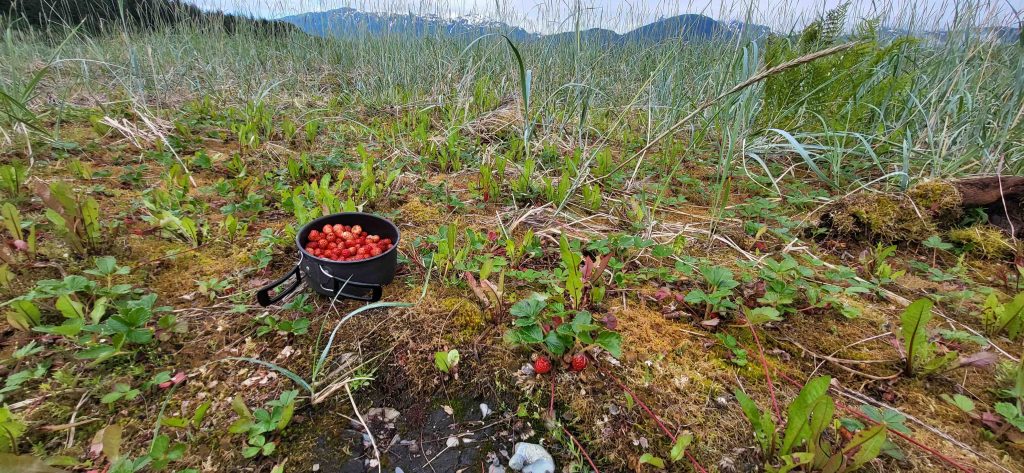 I am delighted to announce that a new paper has appeared in the journal Lethaia on Middle Jurassic paleoecology in southern Israel. The senior author is Yael Leshno Afriat, and it was part of her PhD dissertation at Hebrew University in Jerusalem. It is magnificent work, and I’m proud to have had a role in it. I spent thirteen delightful field seasons in Israel, and one of my dreams was that an Israeli graduate student would take on the diverse and complex fossil communities in the Middle Jurassic of the Negev. Yael did just that, completing her PhD last year and now publishing a major part of her dissertation. Beow are some excerpts.
I am delighted to announce that a new paper has appeared in the journal Lethaia on Middle Jurassic paleoecology in southern Israel. The senior author is Yael Leshno Afriat, and it was part of her PhD dissertation at Hebrew University in Jerusalem. It is magnificent work, and I’m proud to have had a role in it. I spent thirteen delightful field seasons in Israel, and one of my dreams was that an Israeli graduate student would take on the diverse and complex fossil communities in the Middle Jurassic of the Negev. Yael did just that, completing her PhD last year and now publishing a major part of her dissertation. Beow are some excerpts.
Abstract— Middle Jurassic reefs are known and studied from a wide range of palaeolatitudes, yet southern Tethyan reefs have been relatively understudied. The high abundance of stromatoporoids in southern Tethyan reefs was suggested to indicate a tolerance to oligotrophic and overheated waters. Recent studies affirmed the longtime hypothesis of a warm equable climate in low palaeolatitudes during the Jurassic, which could account for the documented low diversities of low-latitudinal coral reefs during this time interval. We present a case study showing possible evidence for the suggested connection between heat stress, low coral diversity and the success of stromatoporoids in the southern Tethys. The study focuses on the unique erosional depression of Makhtesh Gadol, southern Israel, which preserves a continuous section of the Callovian (Middle Jurassic). It is rich in fossils of benthic macrofauna, especially patch reefs of corals and stromatoporoids. Our quantitative analysis shows for the first time: (1) a variation between a low- and high-diversity of coral patch reefs; and (2) a major shift from coral-dominated patch reefs in the lower part of the section to dominating stromatoporoids in the upper part. The faunal assemblage is used to reconstruct the depositional environment, indicating a shallowing upwards and increasing warmer waters. Patch reef beds showing low coral diversity are correlated with isotopic reconstructions from the same section, providing evidence for elevated water temperatures. The faunal transition from corals to stromatoporoids is correlated with a similar shift in Saudi Arabia, improving the regional correlation to the Arabian Carbonate Platform.
 The two Yaels in the field. Yael Edelman-Furstenberg, Yael Leshno Afriat’s primary advisor, is on the left and Yael Leshno Ariat is on the right (along with my intruding shadow). We are standing at GPS location 055, where fossils from Subunit 51 of the Matmor Formation are abundant. Student Yael is presently surveying the Middle Jurassic sections in Makhtesh Gadol to find suitable places to do stratigraphic fossil collecting and quadrat measurements.
The two Yaels in the field. Yael Edelman-Furstenberg, Yael Leshno Afriat’s primary advisor, is on the left and Yael Leshno Ariat is on the right (along with my intruding shadow). We are standing at GPS location 055, where fossils from Subunit 51 of the Matmor Formation are abundant. Student Yael is presently surveying the Middle Jurassic sections in Makhtesh Gadol to find suitable places to do stratigraphic fossil collecting and quadrat measurements.
 From Figure 1 of the paper: A, palaeogeography and sedimentology of the Arabian Platform in the Callovian (Middle Jurassic) showing Israel on the southeastern margin of the Tethys close to the palaeo-equator and a satellite view of Makhtesh Gadol.
From Figure 1 of the paper: A, palaeogeography and sedimentology of the Arabian Platform in the Callovian (Middle Jurassic) showing Israel on the southeastern margin of the Tethys close to the palaeo-equator and a satellite view of Makhtesh Gadol.
 From Figure 7 of the paper: Some characteristic corals. 1, Enallocoenia; GSI 3711. 2, Adelocoenia; GSI 3701. 3, Coral genus 10, a-c- lateral view; GSI 3709.
From Figure 7 of the paper: Some characteristic corals. 1, Enallocoenia; GSI 3711. 2, Adelocoenia; GSI 3701. 3, Coral genus 10, a-c- lateral view; GSI 3709.
 From Figure 7 of the paper: Some characteristic sponges. 6, stromatoporoids, a- aggregation of branching stromatoporoids in subunit 60-61, b- longitudinal thin section (subunit 60-61), c- branching stromatoporoid (subunit 60-61); GSI 3721. 7, longitudinal section of a massive stromatoporoid; GSI 3719. 8, terminal end of bulbous stromatoporoid; GSI 3718. 9, bulbous stromatoporoid surface with visible astrorhizae; GSI 3720.
From Figure 7 of the paper: Some characteristic sponges. 6, stromatoporoids, a- aggregation of branching stromatoporoids in subunit 60-61, b- longitudinal thin section (subunit 60-61), c- branching stromatoporoid (subunit 60-61); GSI 3721. 7, longitudinal section of a massive stromatoporoid; GSI 3719. 8, terminal end of bulbous stromatoporoid; GSI 3718. 9, bulbous stromatoporoid surface with visible astrorhizae; GSI 3720.
 Senior author Yael Leshno beginning her fieldwork in Makhtesh Gadol in 2014. Since then she got married, had two children, and finished her dissertation!
Senior author Yael Leshno beginning her fieldwork in Makhtesh Gadol in 2014. Since then she got married, had two children, and finished her dissertation!
For me this paper represents the culmination of my fieldwork in Israel. I’m not sure when I will be able to return. I have wonderful memories of work there with adventurous Wooster students, Yoav Avni of the Geological Survey of Israel, and Yael, all of which is documented in this blog.
Reference:
Leshno Afriat, Y., Lathuilière, B., Wilson, M.A., Rabinovich, R. and Edelman-Furstenberg, Y. 2023. Transition from coral to stromatoporoid patch reefs in Middle Jurassic equatorial warm waters. Lethaia, v. 56 (https://doi.org/10.18261/let.56.1.1).






















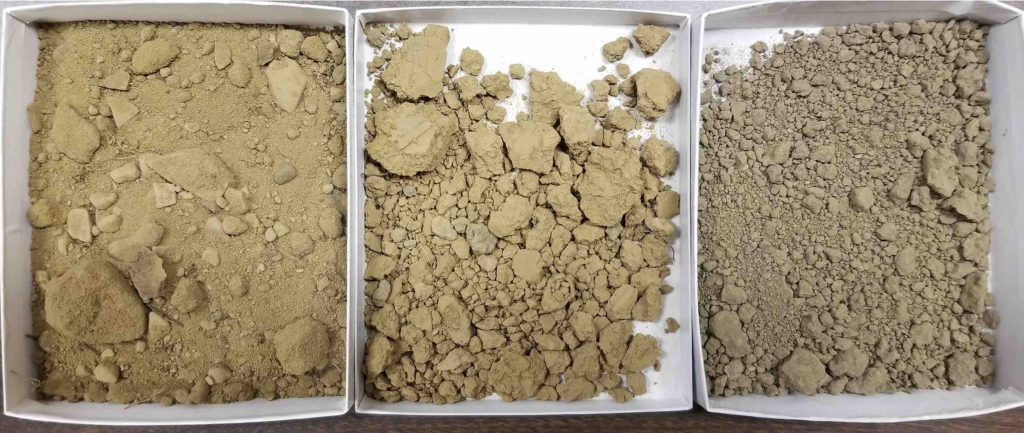






 Big blocks are moved routinely – they are plucked out by the stream along planes of weakness (fractures). Note how the shales break up readily. A block like those above will be mud again in a matter of months. Swelling clays and strong wetting and drying does the job.
Big blocks are moved routinely – they are plucked out by the stream along planes of weakness (fractures). Note how the shales break up readily. A block like those above will be mud again in a matter of months. Swelling clays and strong wetting and drying does the job.
 Stream gaging along Apple Creek. The group gets some hand-on experience with the equipment and puzzles over the various facies of a fining upward fluvial sequence.
Stream gaging along Apple Creek. The group gets some hand-on experience with the equipment and puzzles over the various facies of a fining upward fluvial sequence. Nick and Tyrell take turns in the deep end.
Nick and Tyrell take turns in the deep end.











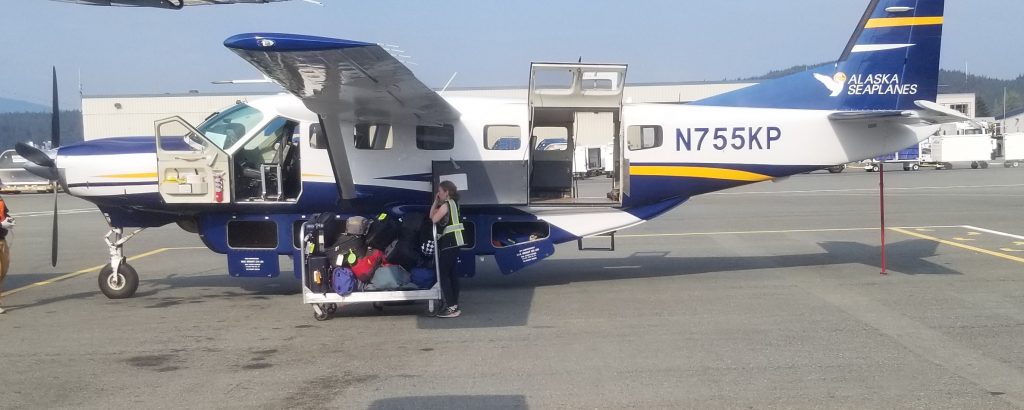

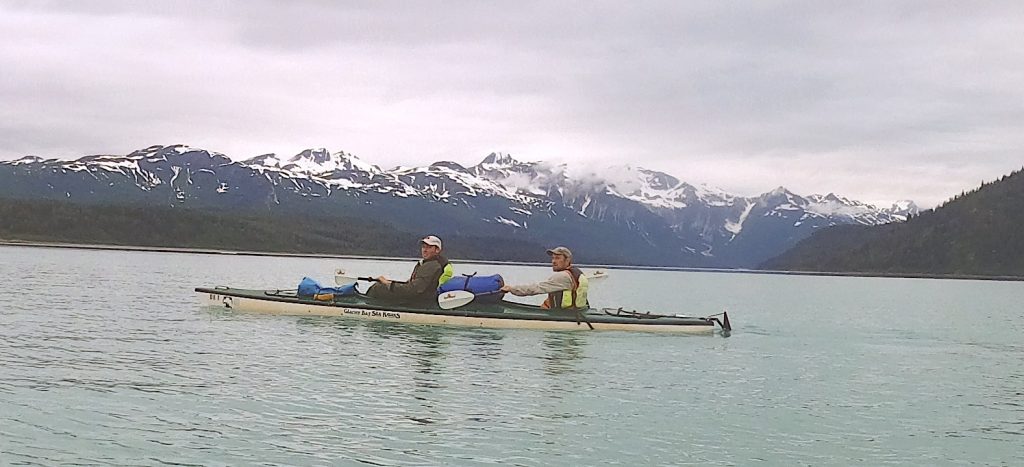





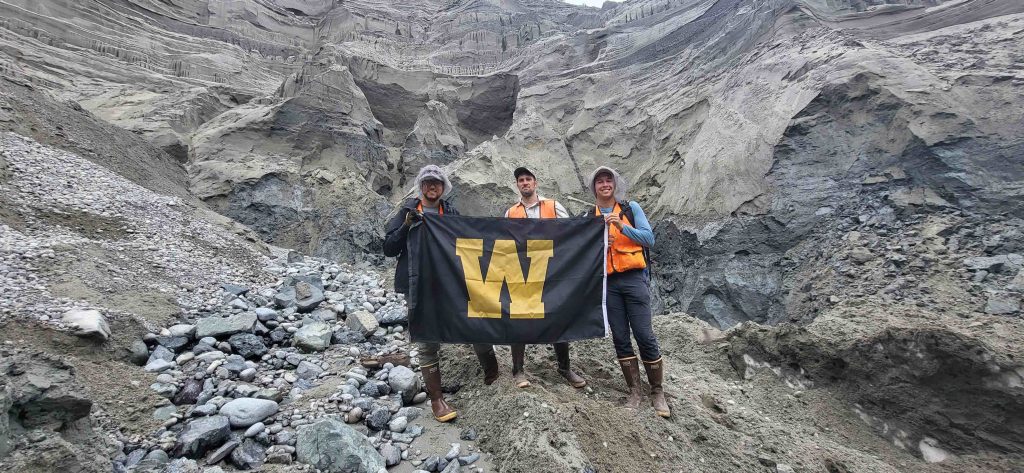


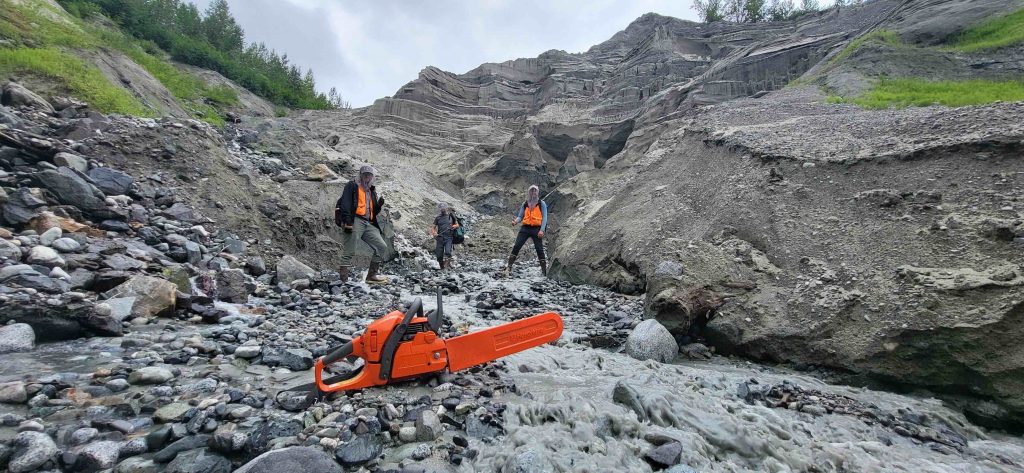





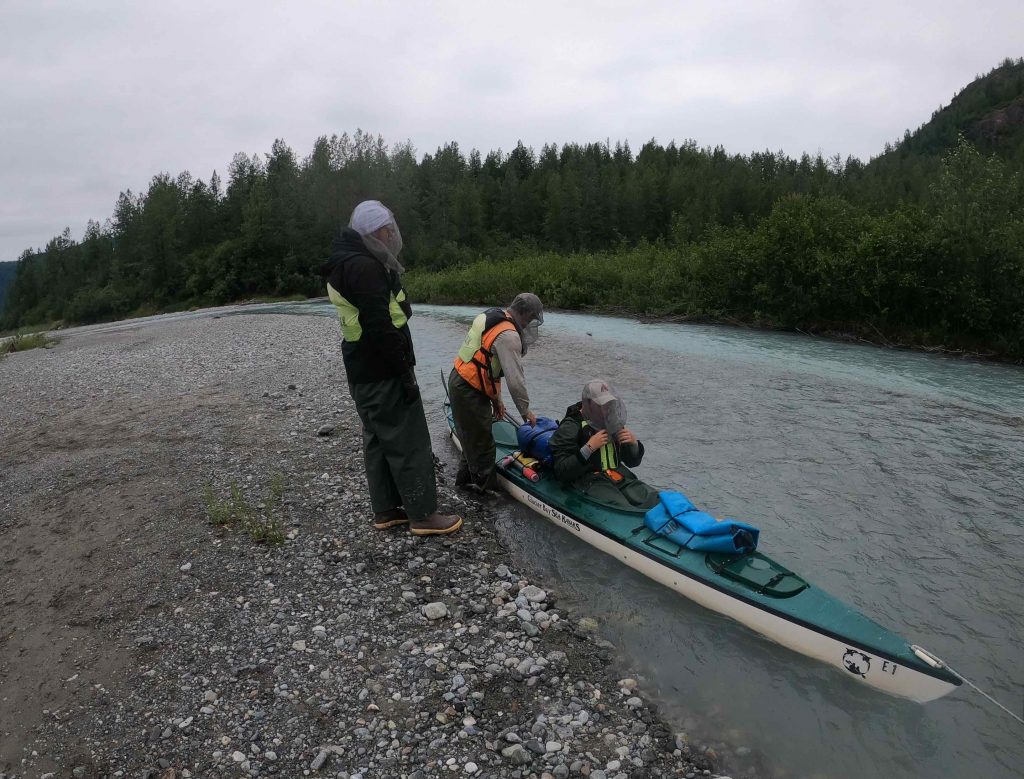
 A view looking west from he Nunatak camp toward Muir Inlet.
A view looking west from he Nunatak camp toward Muir Inlet.

